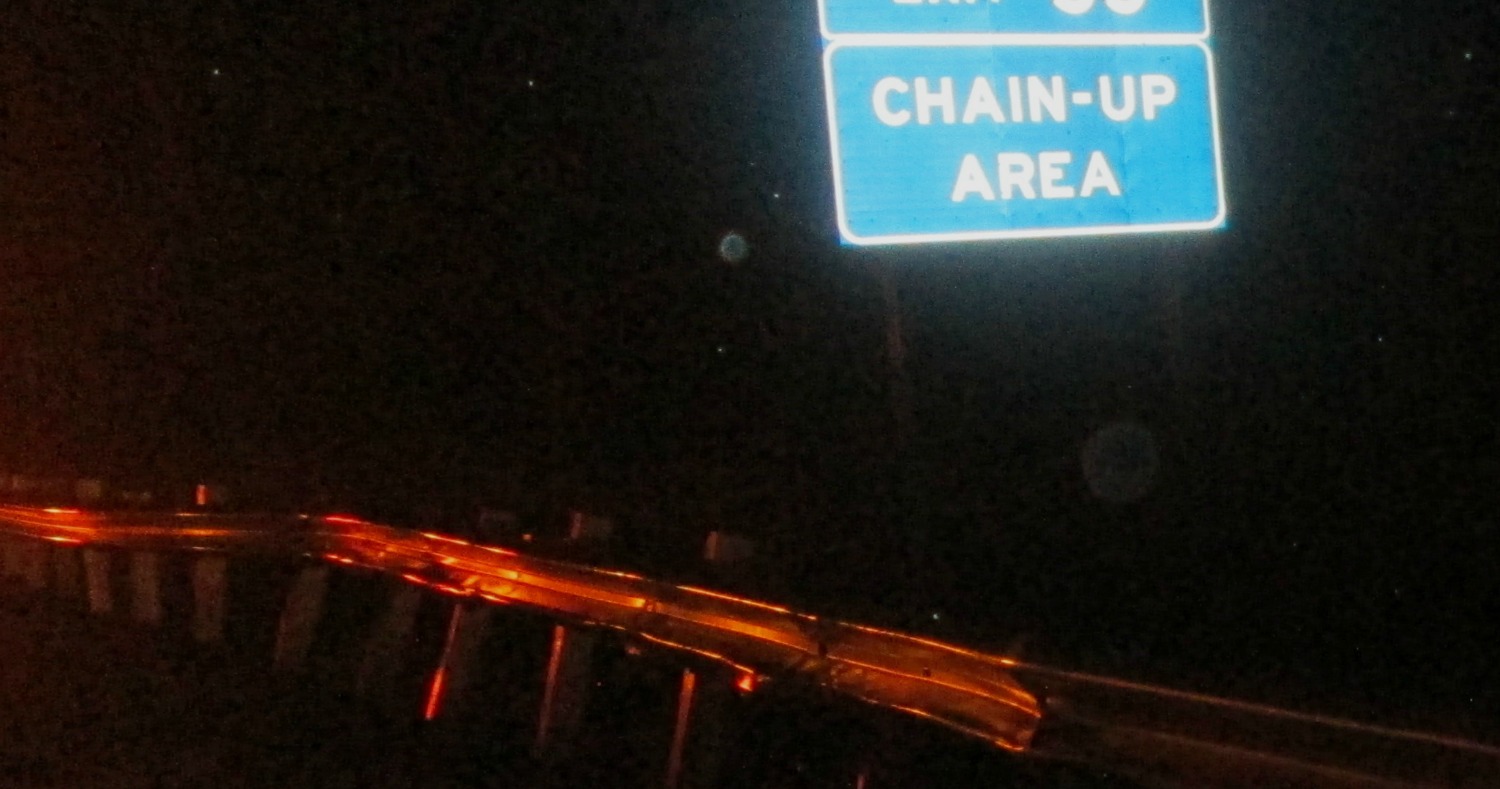
WASHINGTON COUNTY — Multiple crashes were reported throughout the Interstate 15 corridor as motorists navigated through heavy rains Saturday evening.

The first crash was reported at 5:30 p.m. on northbound I-15 near milepost 32 just north of Pintura. The crash involved an 18-year-old driver who was traveling in the far left lane when her vehicle hydroplaned across three lanes of traffic toward the right shoulder where the front of the vehicle struck the guardrail, Utah Highway Patrol Trooper Grant Hintze said.
The impact with the guardrail sent the car sliding to the left and back across three traffic lanes until it slammed into the concrete median and came to rest.
“Her vehicle wasn’t struck by any other cars and she was able to walk away uninjured,” Hintze said. “She was also wearing her seat belt when the accident occurred.”
A little more than an hour later, Hintze said he was dispatched to the “exact same location” on a second singe-vehicle crash involving a dark gray Toyota Tundra pickup truck.
At the time of the crash, the truck was traveling in the inside lane when it hydroplaned across three lanes of traffic to the right where it struck the guardrail and then came to rest in the northbound lane facing south.

“That truck struck the guardrail in the exact same place as the car an hour or so before,” Hintze said.
Fortunately, he added, the pickup truck’s headlights were still operational after the incident, which enabled other drivers to see the disabled truck in the roadway.
The driver of the pickup sustained an injury to his shoulder, and the passenger reported neck pain. Both were transported to Dixie Regional Medical Center for evaluation and treatment.
Meanwhile, a third crash was reported on the southbound side of I-15 near mile post 36 at the Black Ridge Exit involving a Chevrolet pickup truck that was blocking the inside lane, UHP Sgt. Jake Hicks said.
At the time of the crash, the driver was heading south and lost control of the vehicle as it hit a patch of water and began to hydroplane and slide to the left where it struck the concrete median and came to rest blocking the No. 2 lane.
The driver was wearing a seat belt and reported he was uninjured in the crash.
Multiple agencies responded to assist the crashed motorists throughout the evening, including Utah Highway Patrol, Washington County Sheriff’s Office, Hurricane Valley Fire and Ambulance and the Utah Department of Transportation’s incident management team.
Hydroplaning
Hicks said that anytime there are heavy rains, there also tend to be multiple crashes reported within a short time period. While hydroplaning triggered all three crashes Saturday, the underlying cause that creates the environment for this weather-related phenomenon to occur is speed.
“The faster a vehicle is going, the more likely it is to hydroplane,” Hicks said. “That’s just how it works.”
The tread on a tire is designed to channel water from beneath the tire, creating higher friction with the road surface to prevent or minimize instances of hydroplaning.

However, when a tire encounters more water than it can scatter, hydroplaning occurs. Water pressure in the front of the wheel pushes water under the tire, which separates the tire from the road surface by a thin film of water, causing it to lose traction. This results in a loss of steering, braking and power control.
Any vehicle traveling over 35 mph runs the risk of hydroplaning, according to SafeMotorist.com.
Both troopers cautioned drivers to use extra care when driving in the rain.
“This is all due to weather conditions and people driving too fast,” Hicks said, “and they’ve got to slow down.”
While hydroplaning can occur on any wet road surface, according to SafeMotorist.com, the first 10 minutes of a light rain can be the most dangerous. Rain mixed with oil residue on the surface creates slippery conditions that can cause vehicles to hydroplane.
Tips to avoid hydroplaning
- Keep tires properly inflated.
- Rotate and replace tires when necessary.
- Slow down when roads are wet — the higher the speed, the harder it is for tires to scatter the water.
- Stay away from puddles and standing water.
- Avoid driving in outer lanes where water tends to accumulate.
- Try to drive in the tire tracks left by the cars traveling directly ahead.
- Turn off cruise control.
- Drive in a lower gear.
- Avoid hard braking.
- Try not to make sharp or quick turns.
This report is based on statements from police or other responders and may not contain the full scope of findings.
Email: [email protected]
Twitter: @STGnews
Copyright St. George News, SaintGeorgeUtah.com LLC, 2019, all rights reserved.